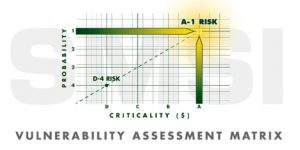Defensive Strategy for the Corona Virus Threat

At any point in time, are you aware who is in your hospital, and where they are? This question is especially applicable to non-patients. This scenario is a factor in most hospital premises liability lawsuits, with intentional torts being a close second.
It is important to keep in mind that security is a proactive discipline. Security is also a situational discipline, which is defined by the ambient threat environment. Business enterprises such as hospitals, shopping malls, educational institutions, the lodging industry and sporting event venues represent a sampling to those enterprises that generally afford public access. It is also these industries that must defend the threat the present pandemic.
The question is, who among your management teams is best qualified to meet this threat? Who among your management team has the most experience in the recognition of threats, and the subsequent mitigation of those threats? Who among your management team is best qualified, to apply the Vulnerability Assessment Matrix? Who among your present management recognizes threats on a routine basis? Who on your management team confronts threats on a routine basis, and subsequently mitigates those threats to an acceptable level? We also encourage a symbiotic relationship between security and risk management.
The partial answer is your security management team. Security professionals routinely deal with an ever-changing threat environment. The threat environment is dynamic and is in a constant state of flux. Threats are not universal in terms of severity and consequence. Many of these security disciplines are like the crime prevention methodologies as practiced by most Police Departments.
The application of CPTED (Crime Prevention Through Environmental Design) by our certified team, is another reason to consider a wide range of cost-effective solutions. CPTED methodologies are also promulgated by most municipal police departments.
Today’s Security Managers, with the help of security management systems such as OMNIGO, enabled the security management team to spot, and effectively mitigate the threat, as well as to ensure that all strategies are collectively producing measurable results. The security team cannot single handed, prevent pandemic assault. However, the security team, along with medical community, can help to contain the virus, within their facility, thereby supporting the medical/scientific community. The security team should also be guided by the medical experts. The application of the afore mentioned OMNIGO, will allow for the quantification the ambient threat environment, as well as the effective impact of applied remedies.
The application of the Vulnerability Assessment model allows to the quantification of a wide range of threats, both now, an into the future. The Vulnerability Assessment Matrix model also provides a budgetary roadmap for a wide range of mitigation methodologies. Remember, at its best, security is a proactive discipline.
The SMSI Team is willing to play a supportive role in support of your security program, now and or, in the future. This team has also been retained as qualified experts witnesses for security driven lawsuits on behalf of both defendants, as well as plaintiffs. The time to address the issue of lawsuits, is through mitigation before-the fact.
William H. Nesbitt, President of SMSI Inc
805-241-3800
bill@smsiinc.com
Security Management Services International, Inc.
NOTE: Finally, considering the degree to which hospitals are burdened by CAVI-19, from both the perspective of a staffing burden, as well as the weight of financial burden, security and loss prevention programs must adjust to new and emerging needs. This includes adequate perimeter, as well as interior access management. If your organization would benefit from of these security considerations, do not hesitate to call Bill Nesbitt CPP, President of SMSI Inc. We welcome the opportunity to provide you with a site-specific Proposal. Remember, security is, and must continue to be, a proactive and anticipatory discipline.
